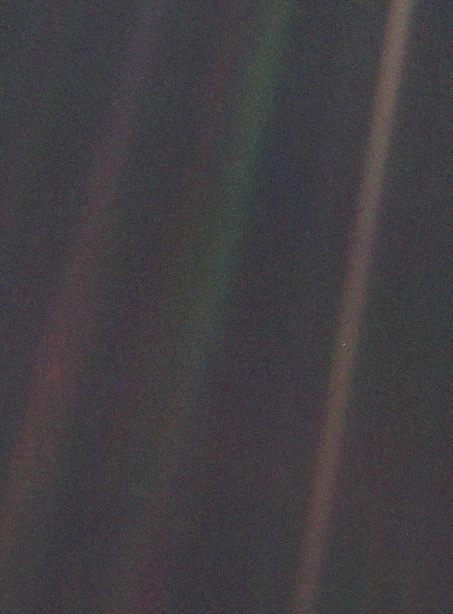2023’s Biggest Breakthroughs
2023’s Biggest Breakthroughs in Computer Science
- Hyper-dimensional Computing (Vector-Driven AI) : Symbolic AI + Statistic AI. by using vectors.
- Quantum factoring algorithms (break large numbers into prime factors) - break modern cryptography. Regev’s algorithm (using high-dimensional lattice), could speed up Shor’s algorithm.
- Large AI Models. “Emergent Behaviors” in large language models — AI programs trained on enormous collections of text to produce humanlike writing.
2023’s Biggest Breakthroughs in Biology and Neuroscience
- The Investigation of Consciousness, distinguish Reality and Imagination using neuroimaging.
- Reality Threshold (not boolean) - when imagined view is vivid, we might confused it with reality.
- PFC (prefrontal cortex) and VC (visual cortex) may be directly involved in this process.
- Microbiomes Evolve With Us. Global Microbiome Study Gives New View of Shared Health Risks. The organisms in our microbiome (the collection of bacteria and other cells that live in our guts and elsewhere on our body) spread between people, especially those with whom we spend the most time.
- This raises the intriguing possibility that some illnesses that aren’t usually considered communicable might be.
- How Life Keeps Time, Mitochondria Keep Time in biological process - tissues mature (which vary dramatically between species). Mitochondria may very well serve dual roles as both the timekeeper and power source for complex cells.
2023’s Biggest Breakthroughs in Physics
- Low-Frequency Gravitational Waves
- Quantum Energy Teleportation effectively borrowing energy from a distant location and thus violating no sacred physical principles.
- teleport information through quantum entanglement.
- Discoveries from the James Webb Space Telescope including observations of light from galaxies that glowed some 300 million years after the Big Bang and an abundance of supermassive black holes.
2023’s Biggest Breakthroughs in Math
- Ramsey Numbers. A new, tighter upper bound to Ramsey numbers - R(n) measures the size that graphs must reach before inevitably containing n cliques.
- Aperiodic Monotile - one tile that covers the plane but only in a pattern that never repeats - Tiling’s Holy Grail
- a continuum of an infinite set of 13 sided aperiodic tiles.
- Aperiodic Monotile without reflection.
- Three Arithmetic Progressions Problem : How many integers can you throw into a bucket while making sure that no three of them form an evenly spaced progression?
- Kelley and Meka smashed a long-standing upper bound on the number of integers smaller than some cap N that could be put in the bucket without creating such a pattern.
James Webb Space Telescope
- (1) a flawless mirror that autonomously unfolds and focuses; (2) the moon, Earth and sun all lie in the same direction - back of the mirror, to avoid heat. (3) at Lagrange point 2, farthest away from earth and moon.
- The rocket liftoff from Kourou, French Guiana, on December 22, 2021, more than 30 years after its payload, 14 years behind schedule and 20 times over budget.
- See the universe’s first billion years (out of its roughly 13.8-billion-year history).
- young galaxies - a surprising number with cyclones churning in their centers.
Hubble:
- Cosmic microwave background.
- Dark matter.
- Cosmic inflation -> fluctuations -> galaxies.
- Hubble Deep Field photo : Galaxies appear at all ages and stages of development.
Others
Reading the breakthroughs, this articles recalls me : A Pale Blue Dot - Carl Sagan.

Look again at that dot. That’s here. That’s home. That’s us. On it everyone you love, everyone you know, everyone you ever heard of, every human being who ever was, lived out their lives. The aggregate of our joy and suffering, thousands of confident religions, ideologies, and economic doctrines, every hunter and forager, every hero and coward, every creator and destroyer of civilization, every king and peasant, every young couple in love, every mother and father, hopeful child, inventor and explorer, every teacher of morals, every corrupt politician, every “superstar,” every “supreme leader,” every saint and sinner in the history of our species lived there–on a mote of dust suspended in a sunbeam.
The Earth is a very small stage in a vast cosmic arena. Think of the rivers of blood spilled by all those generals and emperors so that, in glory and triumph, they could become the momentary masters of a fraction of a dot. Think of the endless cruelties visited by the inhabitants of one corner of this pixel on the scarcely distinguishable inhabitants of some other corner, how frequent their misunderstandings, how eager they are to kill one another, how fervent their hatreds.
Our posturings, our imagined self-importance, the delusion that we have some privileged position in the Universe, are challenged by this point of pale light. Our planet is a lonely speck in the great enveloping cosmic dark. In our obscurity, in all this vastness, there is no hint that help will come from elsewhere to save us from ourselves.
The Earth is the only world known so far to harbor life. There is nowhere else, at least in the near future, to which our species could migrate. Visit, yes. Settle, not yet. Like it or not, for the moment the Earth is where we make our stand.
It has been said that astronomy is a humbling and character-building experience. There is perhaps no better demonstration of the folly of human conceits than this distant image of our tiny world. To me, it underscores our responsibility to deal more kindly with one another, and to preserve and cherish the pale blue dot, the only home we’ve ever known.
— Carl Sagan, Pale Blue Dot, 1994